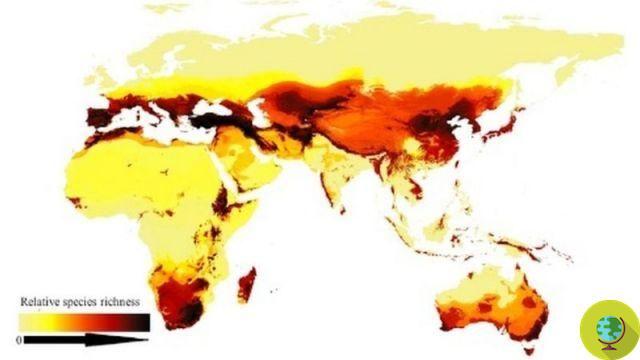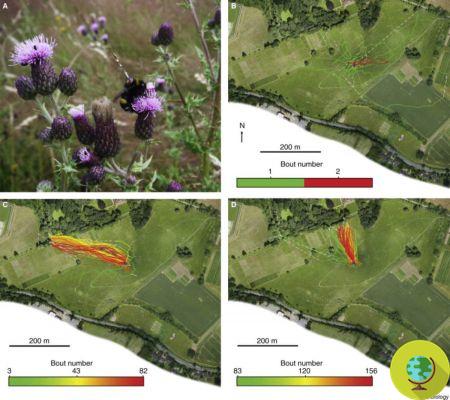Scientists have mapped the distribution of all 20.000 bee species on Earth. The map will help protect them
He is about to end up run over, his mother saves himThere are over 20.000 bee species around the world but there was no precise data on how these species were able to spread across the planet. At least so far. A group of researchers from the Chinese Academy of Sciences has created the first map of the "diversity" of bees.
A document that will help in the conservation of the insects we rely on to pollinate our crops. Unfortunately, as has long been known, pollinating insects are experiencing a drastic decline due to habitat loss and the use of pesticides.
But how do you know which species exist, how they are and where they live? An enormous work carried out by Chinese scientists in collaboration with colleagues in Singapore. The international team combined the most comprehensive global checklist of known bee species with nearly 6 million additional public records indicating where individual species have appeared around the world.
The results showed that there are more species of bees in the northern hemisphere, from Europe to North America, which in the south and they are present more in arid and temperate environments than in the tropics.
"People think of bees only as honey bees, bumblebees and perhaps a few others, but there are more species of bees than birds and mammals combined," said senior author John Ascher, assistant professor of biological sciences at the National University of Singapore. "The United States has by far the most bee species, but there are also large areas of the African continent and the Middle East that have high levels of unknown diversity, more so than in tropical areas."
Many plants and animals follow a pattern, known as a latitudinal gradient, in which diversity increases towards the tropics and decreases towards the poles. Bees are an exception to the rule, having more species concentrated towards the poles and less close to the equator, a pattern known as a bimodal latitudinal gradient. According to the study, there are far fewer bee species in forests and jungles than in arid desert environments because trees tend to provide fewer sources of food for insects than plants and flowers.

© BBC
“When it rains in the desert, there are these unpredictable mass blooms that can literally carpet the entire area,” explains lead author Michael Orr, a postdoctoral fellow at the Institute of Zoology of the Chinese Academy of Sciences. “There is a much higher turnover in the desert due to irregular resources year after year. So there is a lot of potential for new species there ”.
To create their maps, Ascher, Orr, Hughes and colleagues compared the data on the presence of individual bee species with a huge checklist of more than 20.000 species compiled by Dr. Ascher is accessible online on the DiscoverLife.org portal. Cross-referencing multiple datasets with complementary coverage produced a much clearer picture of how the numerous bee species are distributed across different geographic areas.
This is a critical step in assessing the distribution and potential decline of insect populations.
Although some of these models had been hypothesized by previous research, they were difficult to prove due to inaccurate, incomplete, or difficult to access data. The "cleansing" of this data was a major obstacle for researchers.

© Current Biology
"Many crops, especially in developing countries, depend on native bee species, not honey bees," says Hughes. "There is very little data on this and providing a reasonable basis is essential if we are to maintain both the biodiversity and the services these species provide in the future."
Unfortunately, bees are at risk of extinction, almost 90% of the population has disappeared in recent years. This research is the first step towards a more complete understanding of their global diversity. While much remains to be learned, the team hopes their work will help in the conservation of bees as global pollinators.
Sources of reference: Current Biology, ScienceDirect
READ also:
- Insect Atlas: Pesticides have already wiped out a third of bees and other species around the world
- The bee declared the most important living being on the planet, but risks extinction
- Smog makes bees sick. The new study confirms it


























